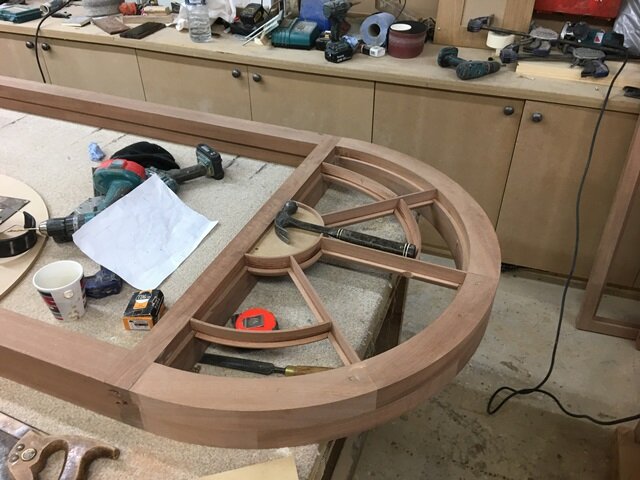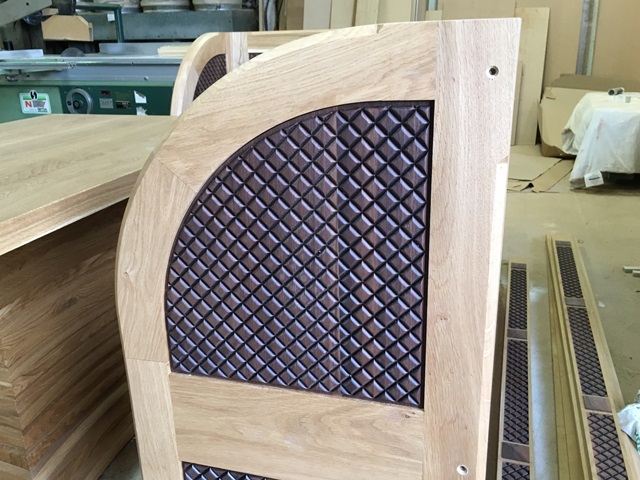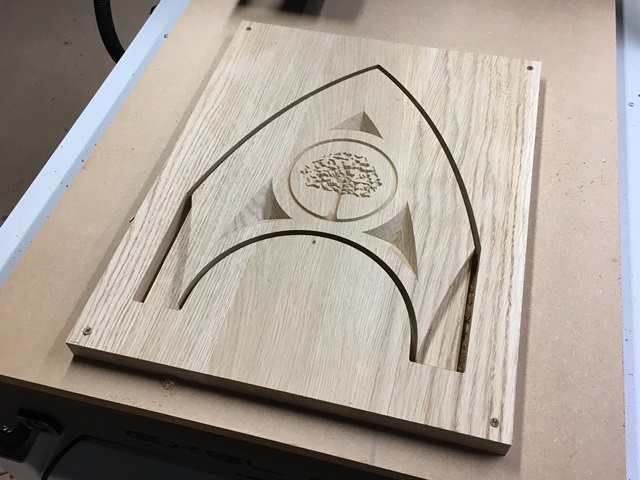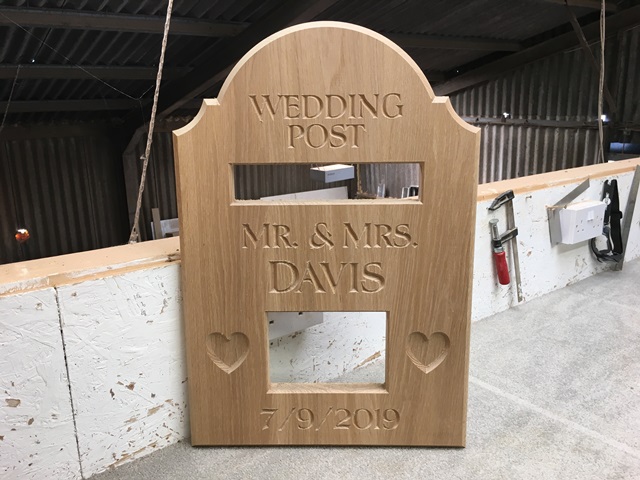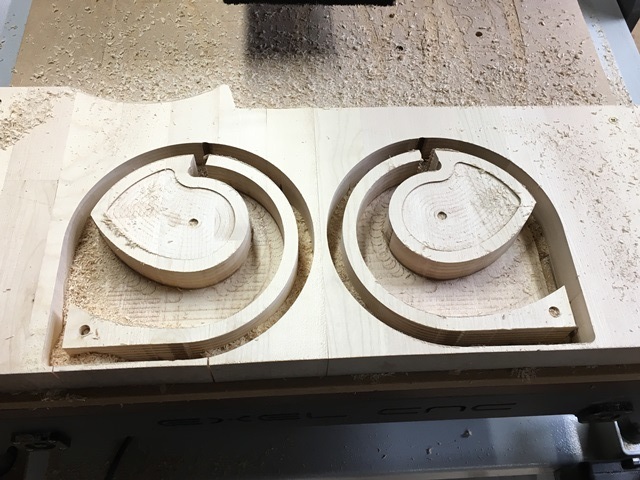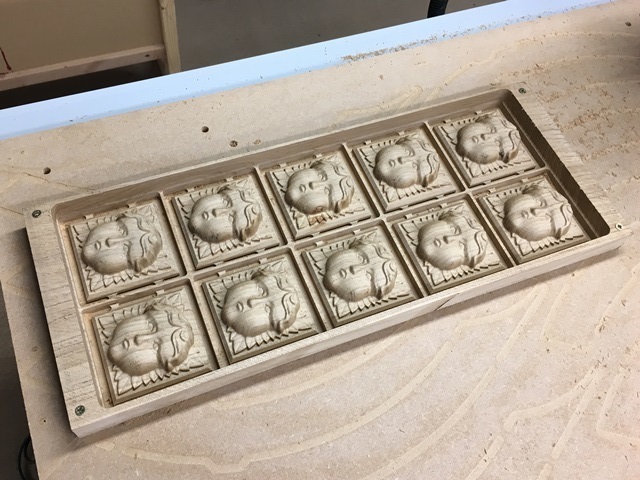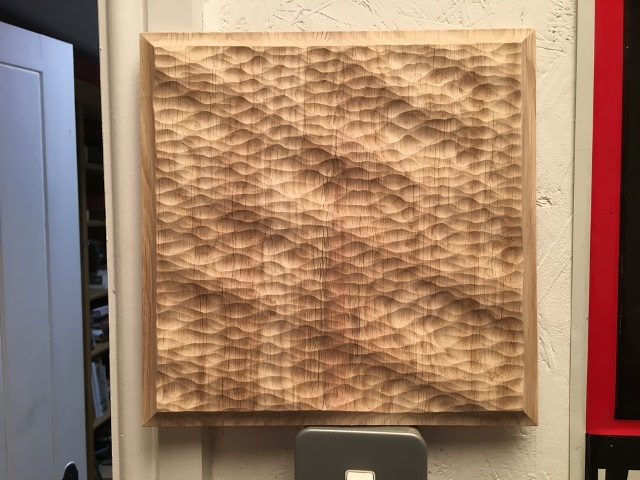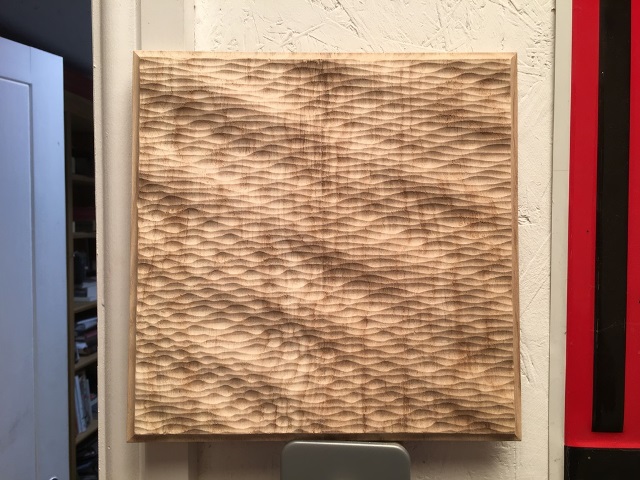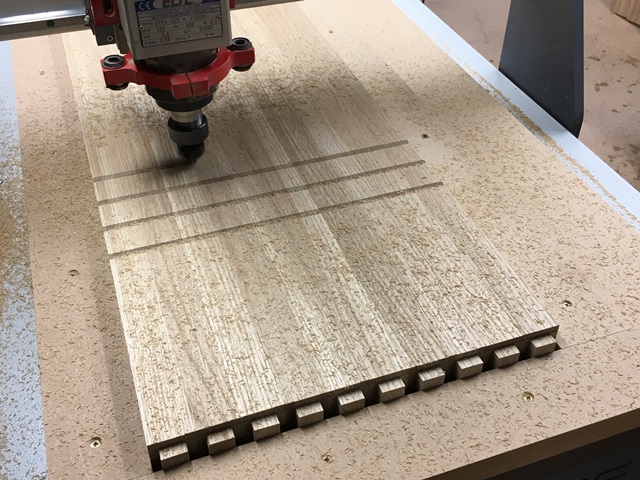Now the big CNC is up and running it was almost back to normal this week in the workshop. I did have an opportunity to work on the new green machine cutting some Valchromat (a dense coloured MDF type material). I had to make some concentric shapes which will eventually become frames for an artist customer of ours. You can see these being cut in the first two pictures below. These went well apart from a small fire I managed to start in one of the holes due to heat build up from not being able to clear the chips. Lesson learned and minimal damage caused, for the rest I cut the holes with a smaller cutter spiralling into the hole to clear the debris (and heat). Another relatively quick job I did this week was a pair of rounded speaker frames for one of the other companies that has a workshop on the farm where we’re located. They specialise in VW restoration - particularly campers. The simple oval frame you can see in the third photo below will become one of a pair of frames around a 6 x 9 speaker for one of their current projects.
As any regular reader will expect to see, there has also been some more cherub activity this week. I’ve been working on trying to replicate an antique carving for one of our clients for a while. I have done previous simplified versions for some of the panels we’ve made but he wants to make a much larger version that will become and external sign on his house. So I wanted to try and really nail the face and also get each of the wings which are asymmetrical as close as possible to the original. The 17th century carving can be seen being held in the first picture below. The model I created based on photos of this is on the screen next to it. From this you can see the carving of a smaller scale maquette on the CNC in progress in the second photo and then complete in the third. I’m really pleased with how close this is to the original and can now work to create the much larger version for the client. I’m hoping next week I’ll get started on the Chimney Piece work but there is always plenty of potential for interesting distraction too.













































